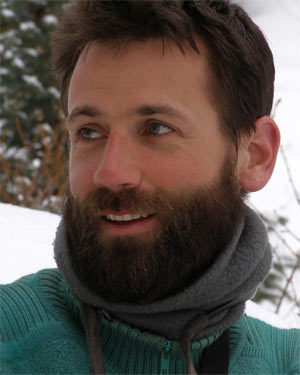Peer-Reviewed Scientific Publications
Tercek
MT,
JE. Gross, and DP. Thoma. 2023. “Robust
Projections
and Consequences of an Expanding Bimodal Growing Season in the
Western United States.” Ecosphere
e4530.https://doi.org/10.1002/ecs2.4530
Tercek
MT, Thoma D, Gross JE, Sherrill K, Kagone S, Senay G.
2021.
Historical changes in plant water use and need in the
continental
United States. PLoS ONE 16(9): e0256586.
https://doi.org/10.1371/journal.pone.0256586
Tercek, M.T., A. Rodman, S. Woolfolk,Z. Wilson, D.
Thoma, and J. Gross. 2021. Correctly applying lapse rates in
ecological studies: comparing temperature observations and
gridded data in Yellowstone. Ecosphere
12(3) e03451.
Thoma, D.P., M.T. Tercek, E.W. Schweiger, S.M.
Munson, J.E. Gross, and S.T. Olliff. 2020. Water balance as an
indicator of natural resource condition: Case studies from
Great Sand Dunes National Park and Preserve. Global Ecology
and Conservation 24(2)
e01300.
Painter LE, and M. Tercek. 2020. Tall willow thickets
return to northern Yellowstone. Ecosphere 11(5):
e03115. 10.1002/ecs2.3115
Al-Chokahachy, R., A. Ray, D. Thoma, M. Tercek. 2017.
Evaluating species-specific changes in hydrologic regimes: an
iterative approach for salmonids in the Greater Yellowstone
Area (USA). Reviews in Fish Biology and Fisheries.
doi:10.1007/s11160-017-9472-3
Tercek M., and
A.
Rodman. 2016. Forecasts of 21st Century Snowpack and
Implications for Snowmobile and Snowcoach Use in Yellowstone
National Park. PLoS ONE 11(7): e0159218.
doi:10.1371/journal.pone.0159218 view
Gross J., M.
Tercek, K. Guay, M. Talbert, T. Chang, A. Rodman, D.
Thoma, P. Jantz, and J. Morissette. 2016. Analyses of
historical and projected climates to support climate
adaptation in the northern Rocky Mountains. Chapter 4 in
Hansen et al. (eds.) Climate Change in Wildlands: Pioneering
approaches to science and management. Island Press.
Washington.
Sepulveda, A., M.
Tercek, R. Al-Chokhachy, A. Ray, D. Thoma, B. Hossack,
G. Pederson, A. Rodman, T. Olliff. 2015. The Shifting Climate
Portfolio of the Greater Yellowstone Area. PLoS ONE 10(12):
e0145060. doi:10.1371/. view
Tercek, M.T.,
S. Gray, and C. Nicholson. 2012. Climate Zone Delineation:
Evaluating Approaches for Natural Resource Management.
Environmental Management 49: 1076 – 1091. view
Tercek, M.T.,
R. Stottlemyer, and R. Renkin. 2010. Bottom-up factors
influencing riparian willow recovery in Yellowstone National
Park. Western North American Naturalist 70: 387-399. view
Appoloni, S., Y.
Lekberg, M.T. Tercek, C.A. Zabinski, and D. Redecker.
2008. Molecular community analysis of arbuscular mycorrhizal
fungi in roots of geothermal soils of Yellowstone National
Park (USA). Microbial Ecology 56: 649-659. view
Tercek, MT
and J.L. Whitbeck. 2004. Heat avoidance life history strategy
controls the distribution of geothermal Agrostis in
Yellowstone. Ecology 85(7): 1955-1966. view
Tercek, M.T, D. P.
Hauber and S.P. Darwin. 2003. Genetic and historical
relationships among geothermally
adapted Agrostis of North America and Kamchatka: evidence for
a previously unrecognized, thermally
adapted taxon. American Journal of Botany 90:1306-1312. view
Selected Technical Reports and Protocols
Tercek, M.T. 2019. Nowcasting and Forecasting Fire
Severity in Yellowstone. Yellowstone Science 27(1): 27 - 33.
Tercek, M.T.,
A. Rodman, and D. Thoma. 2015. Trends in Yellowstone snowpack.
Yellowstone Science 23(1): 20 - 27. view
Tercek, M.T. 2015.
A seemingly small change in average temperature can have
big effects. Yellowstone Science 23(1): 70 - 71. view
Tercek, M.T.
2015. Data substitution among weather stations in Yellowstone
National Park: Defining the scope of the problem. Technical
report submitted to National Park Service. view
Tercek, M.T.
2012. Analysis of Temperature Patterns in Channel Islands
National Park. Technical Report Submitted to The Nature
Conservancy and the National Park Service. view
Tercek, M.T. 2011.
Distribution map and habitat description for Eriogonum
umbellatum var. cladophorum, a rare, endemic
plant species in Yellowstone National Park. Report submitted
to the Yellowstone Center of Resources, Yellowstone National
Park. Due to the sensitive habitat information in this
report, it will not be publicly available, following a
request from the National Park Service.
Tercek,
M.T. 2010. Yellowstone
northern range riparian willow inventory. Report submitted
to the National Park Service in Yellowstone National Park.
Frakes,
B. , S. Ostermann-Kelm, I. Ashton, J. Burke, R. Daley, M. Tercek, D.
Pillmore, C. Jean, M. Britten, S. Gray, and T. Kittel. 2010.
Rocky Mountain Climate Protocol: Climate monitoring in the
Greater Yellowstone and Rocky Mountain Inventory and
Monitoring Networks. National Park Service Monitoring
Protocol NPS/IMRO/NRR -2010/222. view
Tercek, M.T.,
T. S. Al-Niemi, and R.G. Stout. 2008 Plants Exposed to High
Levels of Carbon Dioxide in Yellowstone National Park.
Yellowstone Science 16:12-19. view
Other Stuff
(Follow the links)
Appearance in a climate change video
produced by the National Park Service
Interview in Sierra Magazine
I contributed a graph to the May 2016
issue of National Geographic (page 145 of print edition)


